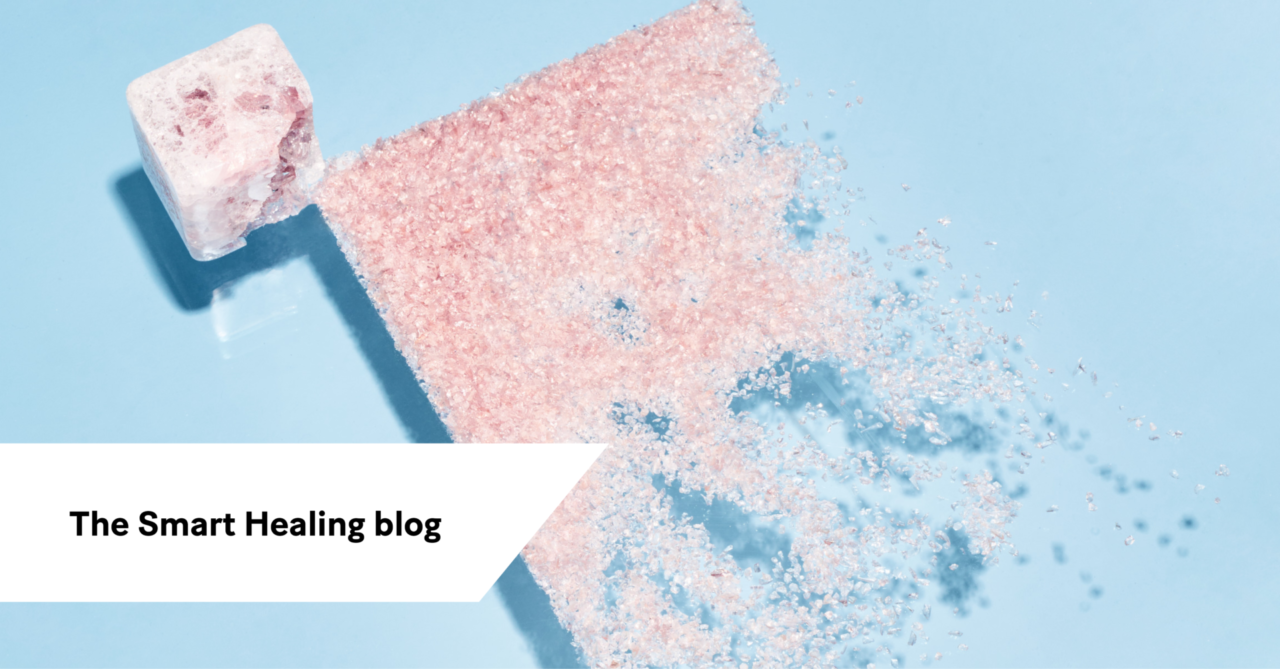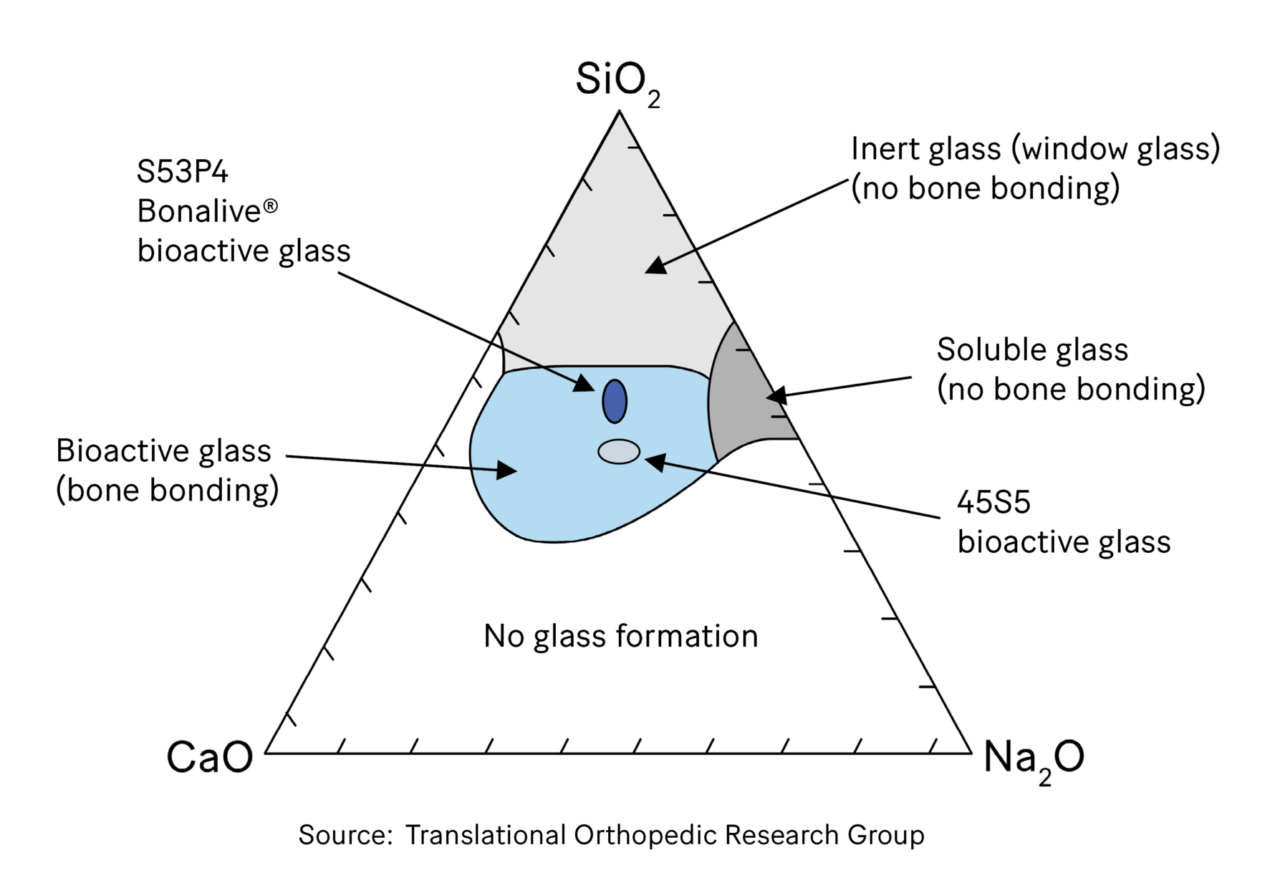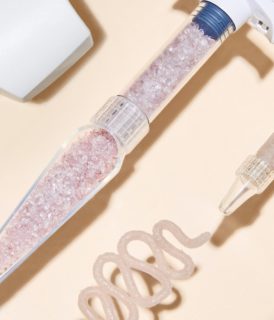S53P4 bioactive glass in healthcare – International Year of Glass
In 2022 we celebrate the International Year of Glass (IYoG). Glass is a versatile material based on silicate, but it comes in many forms. Bioactive glass has advanced healthcare in the last decades. We asked Prof. Leena Hupa about the science behind bioactive glass of different compositions and future research.

International Year of Glass
The United Nations has decided to celebrate the essential role glass has in society during 2022. The International Year of Glass will underline the technological, scientific and economic importance of glass in society.
Leena Hupa, professor at the Laboratory of Molecular Science and Engineering (Åbo Akademi University, Turku, Finland), has been researching glass for over two decades. She is also a council member of the International Commission of Glass (ICG) . “Glass is the material of endless possibilities”, Prof. Hupa exclaims.
“Glass is the material of endless possibilities” Prof. Leena Hupa
What is bioactive glass?
All types of glasses have silicate as the main component. Depending on the composition, the glass can either be inert (window glass), bioactive, or soluble (water glass). Bioactive glasses dissolve in the surrounding solution while releasing ions. A hydroxyapatite layer is then formed, which allows for new bone to grow onto and between the glass structures. The glass slowly biodegrades in the body.
The first bioactive glass, Bioglass® 45S5, was developed in the US by Prof. Hench in the late 1960s. Later, in the 1980s, other glass compositions were studied in Turku, Finland.
Bioactive glass research in Turku

It started as an interdisciplinary collaboration between chemical engineering and medicine, says Prof. Hupa. Several glass series were tested in laboratory and animal studies. The aim was to understand the physical and biological properties of different compositions. More than 50 glasses have been studied in vivo in Turku and these compositions form the basis for the property modelling.
“The results from the model were used to calculate optimal ratios for different purposes”, Prof. Hupa continues. “With the help of the model, we could now explain how the properties change when the composition of the glass is changed”. Based on the results from the first study, a total of 16 statistically chosen glass compositions were developed.
“The results from the model were used to calculate optimal ratios for different purposes”
Laboratory and animal studies were conducted to evaluate surface reactions and tissue response, “For example, how fast hydroxyapatite is formed”, Prof. Hupa explains. A wide range of interactions with bone was observed in the different glass compositions, ranging from no bone contact to chemical bonding to bone. The properties of glasses studied at Åbo Akademi follow the trends suggested by the well-known composition-bioactivity diagram by Hench et al. (see below).

Features of S53P4
One of the 16 glass compositions found to be bioactive was S53P4, composed of:
- 53% SiO2
- 23% Na2O
- 20% CaO
- 4% P2O5
The S53P4 glass was both osteoconductive (i.e. serves as a scaffold for bone cells) and osteoproductive (stimulates bone formation). In addition, a strong bacterial growth-inhibiting effect was observed. Studies have confirmed an increase in the pH level and osmotic pressure after implantation of S53P4, which changes the local physiological surroundings at the implant site.
The slower reaction phase of the S53P4 bioactive glass is thought to be essential for the inhibition of bacterial growth
“This effect, which lasts for a few days for this particular composition, is thought to explain the inhibition of bacterial growth”, says Prof. Hupa. “The reaction phase, when ions are released before the hydroxyapatite layer is formed, is slower for the S53P4 composition, compared to e.g. the 45S5 glass”, she continues. The slower reaction phase of the S53P4 bioactive glass is thought to be essential for the inhibition of bacterial growth. In some other, non-infectious applications, a quicker reaction and hydroxyapatite formation may be desirable. “Some surgeons prefer a faster and thicker formation of hydroxyapatite, for example when fixating implants”, Prof. Hupa explains.
Video: Follow the different reaction phases of S53P4 bioactive glass (Bonalive® granules) when implanted in the body.
Future of bioactive glass research
Bioactive glass research has had a promising start in Finland. “Much remains to be studied, as even the slightest change in composition or introduction of other chemical elements will give rise to new properties”, says Prof. Hupa . Other aspects, such as blood flow, underlying health problems, implantation site, age etc. will also influence how the glass is able to react and bond with the surroundings.
“Much remains to be studied”
“In the future, there will be better possibilities to tailor the bioactive glass composition to match different clinical needs. For example, there has already been studies on whether the addition of Strontium to the 45S5 glass may create a composition favorable for patients with osteoporosis.”, she continues. Research on bioactive glass has been made possible thanks to vital financing from both governmental funding bodies and industry (private companies). “Hopefully there will be a continued interest towards financing new research in this area. However, we can be very proud of the bioactive glass research conducted in Finland”, Prof. Hupa rounds up.
S53P4 bioactive glass products
Bonalive Biomaterials has funded many studies on the use of S53P4 bioactive glass in both laboratory, animal and clinical studies. To this date, the glass has been used clinically for over 20 years, and there is over 200 peer-reviewed articles published on S53P4 in different areas of use. To view the most notable publications, go to our reference page.
The glass manufactured by Bonalive is commercially available in the form of granules and putty. Different product packages have been designed according to various needs of the surgeons. See our products here.
Interested to know more?
Contact us here.
Further reading
How the choice of biologics might change in future surgery